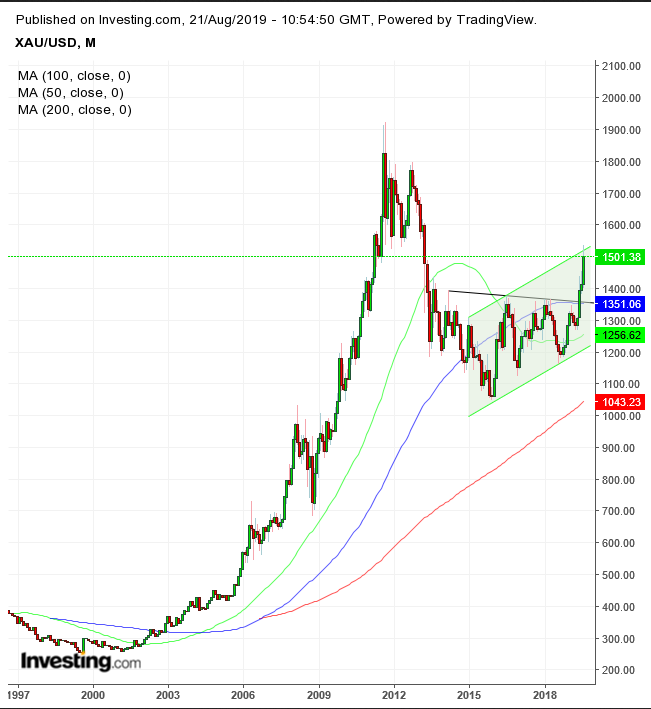Gold is in a comfortable win-win scenario that's likely to see it rise whether monetary policy is eased by the U.S. Federal Reserve or not. Both lower interest rates and recession would boost the price of the yellow metal, historically viewed as the ultimate store of value, and still considered by many to be the only "real money."
There's often misunderstanding about what drives the value of gold: some traders expect it to possess a negative correlation with equities due to its haven status. However, historically it often has a better negative correlation with the dollar.
To begin with, gold is priced in dollars. Second, the USD's value is determined by its interest rate, relative to gold which is a non-yielding asset. This creates a two-fold dynamic: 1. rising interest rates boost the value of the greenback due to its higher yield versus gold’s non-yield, compounded by 2. the stronger dollar, as its base currency, indirectly rendering the precious metal more expensive, stifling demand.
Of course, sometimes the U.S. dollar operates as a safe haven asset. Then, both the currency and the precious metal strengthening in unison, despite the inherent conflict between the the two.
Right now, the case for gold is bolstered by the Fed. The U.S. central bank last month cut rates for the first time since the 2008 financial crisis. Chairman Jerome Powell then signaled further easing could occur due to the still-raging trade war, whose effects already have China and Europe in a slowdown.
If the Fed continues on the path to lower rates, and especially if it returns to QE, diluting the value of existing dollars in the system, we can expect a continued migration to gold, which has already pushed it to a six-year high.
If, on the other hand, the Fed doesn’t join the world in easing monetary policy, the case for a recession dramatically increases, especially if a viable trade deal isn’t reached. Then, gold’s haven status would kick in, also attracting investors. For gold it's a "blessed if you do, blessed if you don’t" scenario.

On the technical charts, gold has completed a massive bottom since 2013, or a continuation H&S in the macro view, since the 2000 bottom. The long-term implied target is a $313 upward move—measuring the pattern from its lowest point in December 2015 to its breakout on June 20, 2019 at $13,50, setting $1,672 as the target.
Trading Strategies
Conservative traders would wait for a return-move of the neckline, to the bottom, which may coincide with the bottom of a rising channel since 2015. Then, they'd wait for evidence of demand, as the price bounces back.
Moderate traders may wait for a return move toward the neckline, for a better entry but not necessarily for proof of reversal.
Aggressive traders may enter a contrarian short on a rally amid volatility in equities, with a close stop-loss above last week’s highs, counting on a pullback.
Trade Sample
- Entry: $15,20
- Stop-Loss: $1,535
- Risk: $15
- Target: $1,475
- Reward: $45
- Risk:Reward Ratio: 1:3
